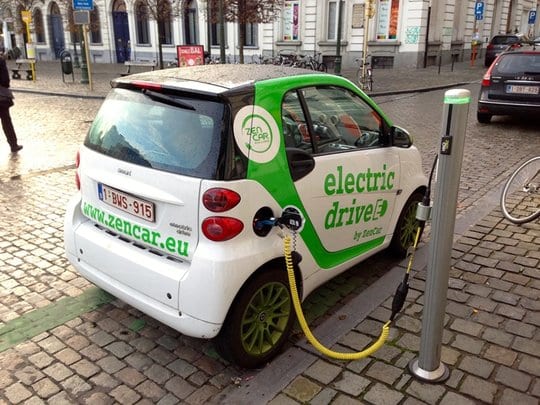Carbon emissions from cars, trucks, trains and airplanes are expected to double by 2050 but those emissions could be reduced by half if cities worldwide widely adopt better public transit and electric vehicles, according to a new studyreleased Friday.
The transportation sector is responsible for 23 percent of all human carbon dioxide emissions fueling climate change today, and they could double by 2050 as people in developing countries drive more.

Credit: Andrew Nash/flickr
The paper, written by researchers from the Mercator Research Institute on Global Commons and Climate Change in Berlin, concludes that as countries head into international climate negotiations in Paris in December, there is scant focus on better mass transit and electric vehicles as a major source of global emissions reductions.
“We see little global appetite among policymakers for seriously discussing thorny transportation issues in public debates and international climate negotiations,” the researchers say in the paper. “Unless this changes swiftly, transport may remain a roadblock to the world’s efforts to mitigate climate change.”
Focusing on transportation emissions cuts will be a major step toward keeping global warming to 2°C (3.6°F) above pre-industrial levels, the study said.
The researchers found that if people in those countries use electric vehicles and public transit, the expected rise in carbon emissions from the transportation sector could be cut in half.
As battery prices fall and the efficiency of electric vehicles continues to improve, emissions from motor vehicles are likely to fall dramatically as gasoline and diesel vehicles are retired in the coming decades, study lead author Felix Creutzig, a researcher at the Mercator Institute and a lead author of the Intergovernmental Panel on Climate Change’s Fifth Assessment Report, said.
The cost of operating an electric vehicle has dropped sharply, from about $1,000 per kilowatt hour in 2007 to $410 in 2014. The study says the costs are expected to fall to $200 by 2030.
In addition to the widespread adoption of electric vehicles, the best way to reduce emissions over time, Creutzig said, is for urban residents to give up driving altogether in favor of cycling and public transit, and for cities to invest in new rail systems, bicycle lanes and other infrastructure that will minimize the need for driving.
Daniel Sperling, a professor of civil and environmental engineering and founding director of the Institute for Transportation Studies at UC-Davis, said it is plausible to cut transportation emissions in half by 2050, but he doesn’t fully accept the report’s conclusions that transportation isn’t figuring into countries’ strategies to cut greenhouse gas emissions.
“Governments are aggressively pursuing reductions in car efficiency and GHG emissions worldwide,” Sperling said. “And issues of vehicle demand and use are mostly local issues, as the authors point out. Fossil energy use and investment is the other big issue, and it is getting attention, though not much action. Thus, I’m not sure how important it is to elevate transport to international negotiations.”
Lewis Fulton, director of the Sustainable Transportation Energy Pathways program at the University of California-Davis who is unaffiliated with the study, said it shows that a global focus on electric vehicles and mass transit can bring about the IPCC’s projections that fuel efficiency will be a major component to emissions reductions by 2050.
“This paper makes it clear that electrification could play a major role in reducing greenhouse gases in global cities,” Fulton said. “Lower battery costs make this seem even more promising with each passing year.”
Fulton said that more people will adopt electric vehicles if they’re small and affordable, such as electric bicycles and small electric cars.
“I also think advanced transit systems such as ‘bus rapid transit’ can play a key role in vastly expanding high quality transit services around the world,” he said.
Source: Climate Central. Reproduced with permission.








